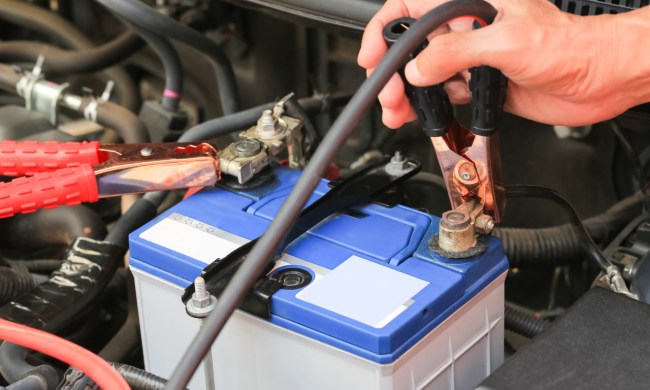Driving can be enjoyable, but there are aspects of owning a car that can dull even the sharpest driving enthusiasm. Maintenance is one part of that, but expensive and confusing replacement parts play a big role as well. Outside of things like oil changes and brake replacements, tires are one of the biggest regular expenses we face as vehicle owners. The challenge is that there are as many (if not way more) tire brands than there are vehicle makes, and picking the right tire for your driving style, climate, and location is not the easiest task in the world.
See more
So, which tires will give you the best traction, safety, and bang for your buck? The answer, as with many things in life, is that it depends. Choosing the tires that will serve your needs best involves determining the kinds of driving you’re doing, the type of vehicle you own, and the weather conditions you regularly see. Even if they own the same vehicle, a person living in Phoenix will need a completely different tire than someone living in upstate New York.
Types of tires
Now that we know that there are several criteria involved in picking out tires for your vehicle, we need to understand the options available to us. The main types of tires for passenger vehicles include:
All-season
All-season tires are designed to provide good all-around traction in most weather conditions. They usually have symmetrical tread pattern and plenty of grooves to channel water out for better wet-weather grip. All-season tires do OK in snow and on slick roads but are much more at home in less extreme conditions.
Touring
Touring tires are very similar to all-season tires in that they’re well-suited to most driving conditions. The big difference between the two is that touring tires generally provide better handling and performance with a higher speed rating than standard all-season tires.

Performance
Performance tires usually have a lower profile (smaller sidewall) and a higher speed rating than all-season or touring tires. They are generally great at providing warm- and wet-weather traction, but may not be well suited for cold climates.
Summer tires
As their name suggests, summer tires are designed for warm-weather use. The rubber compounds in these tires are more pliable and generate better grip when the weather is warm but lose some of that ability in colder temperatures. Summer tires are best suited for performance vehicles in warm weather.
Track tires
Most people will have no use for a dedicated track tire, but for those who do, they are a necessity for high-speed driving. Track tires are generally far grippier and more prone to wear than tires meant for on-road driving, and may closely resemble racing slick tires with little or no treads to funnel out water.
Truck and SUV
There’s a whole world of tires made specifically to handle mud, rock crawling, and trail driving just for trucks and SUVs. These tires can look an awful lot like standard road tires for a sedan, or can be big and knobby to handle the challenges of driving off-road.
When to replace your tires

We’ve probably all seen or heard of the penny test to determine tire wear, but there’s more to figuring out when to replace your tires than looking at Abe Lincoln’s head. If you’re the type of person who ignores regular vehicle maintenance like tire rotations and alignment jobs, you’ll probably find yourself with irregular tire wear and may need to replace the rubber much sooner than someone who is on top of the little things. Tires can lose tread more quickly on one side or the other, depending on the vehicle’s alignment and other factors.
Making the issue more complicated, the tire’s advertised lifespan may not be entirely accurate. You can spend hundreds of dollars more to get the “best” tire on the market, but if you’re driving like Richard Petty on the way to the grocery store every day, there’s a great chance your tire will wear down much faster than the manufacturer’s mileage numbers suggest.
Another red flag for tire replacement is damage or cracking that is visible to the naked eye. This can come from potholes, road debris, or aggressive driving. You may also notice that your vehicle’s ride has become bumpy, uneven, or rough. Where you live can also play a role in how quickly your tires wear out. Temperature extremes one way or the other can damage an otherwise “healthy” tire. Make sure to get a tire pressure gauge to check for pressure loss as well.
Where to buy
Buying tires today is simpler than it has ever been, thanks to dozens of online tire retailers and local shops that work closely with their digital counterparts. Many large online tire stores will ship the tire you choose at no cost to a local shop for free installation. Buying online can be a more comfortable experience for many people, because they can see reviews and get opinions from other buyers without the pressure of a salesperson standing nearby.
On the other hand, buying on the internet means that you’re completely responsible for picking out the exact tires that fit your vehicle. Most major online retailers have tire fit guides built right into their websites, so it’s hard to find the wrong size, but for anyone who is less than knowledgeable about their vehicles, it might be best to find a local shop.
Regardless of where you buy, it’s important to understand the costs involved with buying tires. Beyond the purchase price, you may find yourself paying for installation (which can include mounting and balancing), old tire disposal, and other services. Although you can rotate your car’s wheels on your own, changing your car’s tires isn’t advisable unless you have access to special equipment.

Remember that there’s no concrete science behind buying tires for your vehicle. If the tire fits, meets your needs for weather traction and tread life, and is in your budget, it’s likely to be a good match for your vehicle. Buyer reviews online are helpful to find tires that last as long as the manufacturer says they will and can steer you toward brands that offer high-quality rubber, but the longevity and comfort of your tires will depend on how you drive and how you treat them as an owner.



